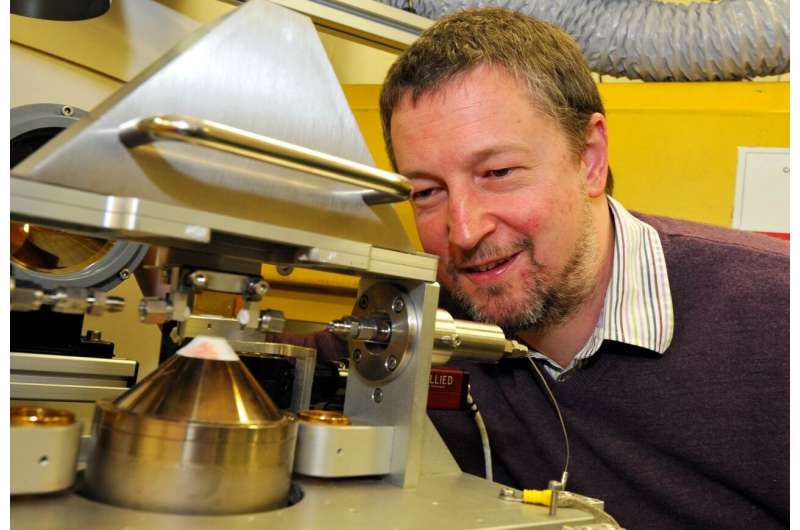Controlling the structure of platinum nanoparticles and tuning their catalytic properties

A new article just published in Nature Catalysis shows the simple ways of controlling the structure of platinum nanoparticles and tuning their catalytic properties.
Research led by Cardiff Catalysis Institute (CCI) in collaboration with scientists from Lehigh University, Jazan University, Zhejiang University, Glasgow University, University of Bologna, Research Complex at Harwell (RCaH), and University College London have combined their unique skills to develop and understand using advanced characterization methods (particularly TEM and B18 at Diamond Light Source), how it is possible to use a simple preparation method to control and manipulate the structures of metal nanoparticles. These metal nanoparticles are widely used by industry as innovative catalysts for the production of bulk chemicals like polymers, liquid fuels (e.g., diesel, petrol) and other speciality chemicals (pharmaceutical products).
Meenakshisundaram Sankar of Cardiff Catalysis Institute, who lead this research along with G. J. Hutchings, explains, "Simply by optimizing very standard preparation parameters, we show how it is possible to manipulate the structural characteristics of platinum nanoparticles supported on titania to produce a highly active and selective catalyst for the synthesis of functionalized anilines. These products are used in the synthesis of everyday goods such as pharmaceuticals, fertilizers and dyes. This is a huge step forward in understanding the role of preparation parameters in tuning the structure of platinum nanoparticles and this will enable us to design more active metal nanoparticles."
The key feature of this article is the tuning of the active sites (where the catalytic reaction occurs) in platinum nanoparticles by various heat treatments and using very low platinum quantities to produce an optimized catalyst.
Andy Beale, Professor of Inorganic Chemistry, UCL based at the Research Complex at Harwell, one of Diamond's collaborating scientific facilities says, "By using 10 times less platinum metal, we have substantially reduced the cost of making this catalyst. Even, with lower amounts of metal, the catalyst is either equally active or more active than the current commercial catalyst. Another important advantage is that this catalyst does not produce any undesired by-products (which generates waste and are very expensive to separate and clean up)."
A multidisciplinary team of colleagues with access to extremely powerful characterization resources at Diamond Light Source, the UK's Synchrotron has enabled the CCI researchers to gain a fundamental understanding of what structure is required for optimizing this nanoparticle catalyst system.
This research has been published in an article entitled "Tuning of catalytic sites in Pt/TiO2 catalysts for the chemoselective hydrogenation of 3-nitrostyrene" in Nature Catalysis.
Professor Laurent Chapon, Physical Sciences Director at Diamond Light Source concludes, "Catalysis is estimated to be involved in 90% of all chemical processes and in the creation of 60% of the chemical products available on the market, which is why it is studied at the atomic scale. The need to understand catalysis at this level is driven by both economic and environmental concerns; therefore there is a global interest in optimizing the synthesis of new catalytic materials and in understanding the fundamental process of catalysis.
"At Diamond, we provide specialist analytical techniques for the atomic to microscale characterization of various catalytic materials, and the in situ study of catalytic processes that are state of the art. We are pleased that the team has been so successful so far in tuning the catalytic properties of platinum nanoparticles."
More information: Margherita Macino et al. Tuning of catalytic sites in Pt/TiO2 catalysts for the chemoselective hydrogenation of 3-nitrostyrene, Nature Catalysis (2019). DOI: 10.1038/s41929-019-0334-3
Journal information: Nature Catalysis
Provided by Diamond Light Source


















